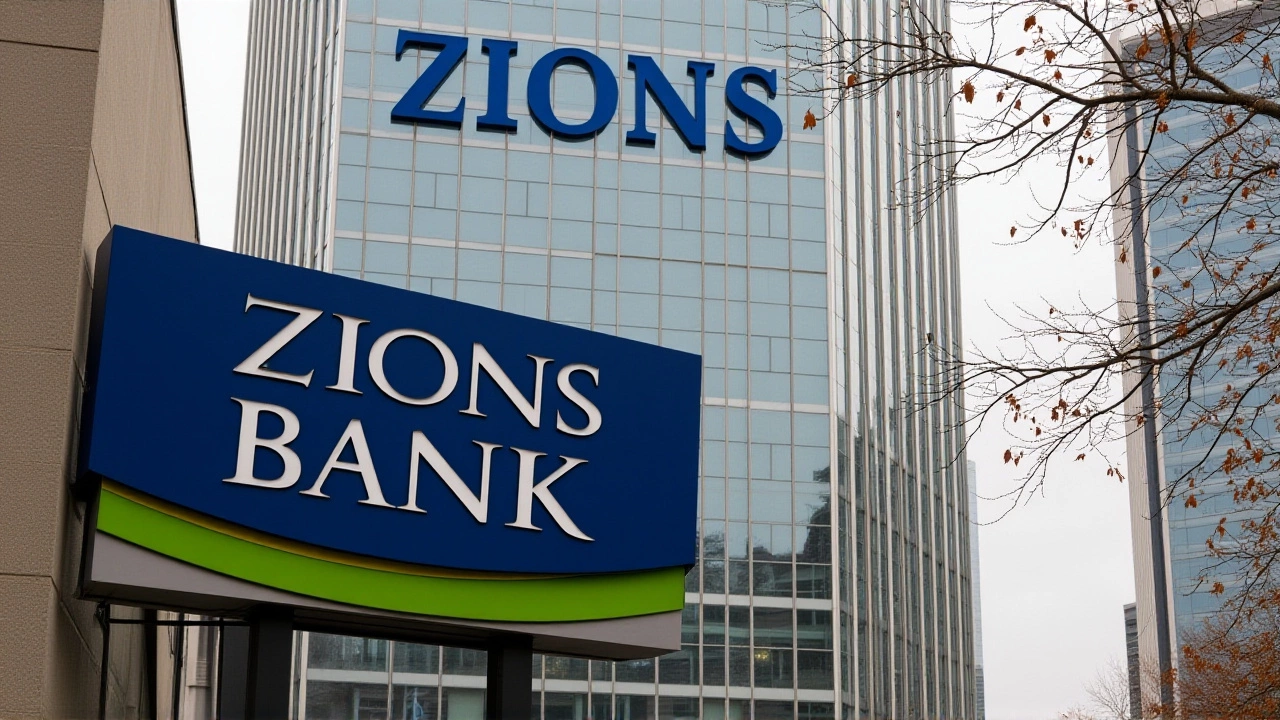When Silicon Valley Bank collapsed in March, investors thought the worst was behind them. But the ripples kept coming, and by October 2023 the median return of major exchange‑traded bank stocks was a bleak ‑2.2%, marking the third straight month of decline.
The slide unfolded amid a broader market downturn: the S&P US BMI Banks index fell ‑3.8% for the month, while the S&P 500 itself slipped ‑2.1%. Those numbers, reported by S&P Global Market Intelligence on November 2, 2023, signal that the anxiety sparked by a handful of small‑bank failures is still echoing through Wall Street.
Backdrop: The 2023 United States Banking Crisis
Everything traces back to the spring‑time shock of the 2023 banking crisis. Between March and May, four institutions vanished:
- Silicon Valley Bank—based in Santa Clara, California with $209 billion in assets—failed on March 10 after a frantic run triggered by a hefty loss on its Treasury bond sale.
- Signature Bank in New York, New York, $110 billion in assets, was shut down on March 12.
- First Republic Bank of San Francisco, California, $213 billion in assets, collapsed on May 1.
- Silvergate Bank announced voluntary liquidation the same day as SVB’s loss announcement, sealing the crisis.
The Federal Deposit Insurance Corporation (FDIC) was appointed receiver for each, while the three major federal regulators—the Federal Reserve, FDIC, and Office of the Comptroller of the Currency—rolled out emergency measures, including the Bank Term Funding Program (BTFP) to shore up liquidity.
October 2023 Market Performance
Data from S&P Global shows the median return for exchange‑traded banks at ‑2.2% for October, following ‑4.7% in September and ‑7.2% in August. The S&P US BMI Banks index’s ‑3.8% decline outpaced the broader market, underscoring that investors are still discounting banking risk more than other sectors.
Bond markets weren’t immune either—yields rose as the U.S. Treasury market absorbed concerns over federal funding and a lingering expectation that the Federal Reserve would keep rates high.
Earnings Reports and Regional Bank Divergence
Big‑ticket banks like JPMorgan Chase and Bank of America beat “grim expectations” with Q3 earnings that surprised analysts. Yet that optimism didn’t spill over to the mid‑tier regional players. Banks with assets between $100 billion and $1 trillion posted a mixed bag, while those in the $10‑$100 billion bracket, plus many community banks, reported weaker year‑over‑year results.
According to the November 2 report from Confluence Financial Partners, more than half of S&P 500 companies had disclosed earnings by month‑end, many showing modest growth but cautious outlooks. The contrast illustrates a sector split: large‑cap banks can lean on diversified revenue streams, whereas smaller institutions remain vulnerable to loan‑loss provisions and deposit outflows.
Policy Response and Interest‑Rate Outlook
On November 1, the Federal Reserve’s policy committee held the target rate steady at 5.25%‑5.50%. Market lore suggested a 15% chance of a December hike, but most analysts see the Fed’s next move as a hold, given the still‑elevated inflation and the recent banking turmoil.
The BTFP, still active, offers one‑year loans to eligible depository institutions against high‑quality collateral—a lifeline that helped prevent a cascade of failures after March. Meanwhile, the FDIC’s guarantee that all deposits at the failed banks would be honored (even those above the $250,000 insurance cap) was meant to restore confidence among tech‑savvy and high‑net‑worth clients who had fled SVB and Signature.

Implications for Investors and Future Outlook
So, why should an everyday investor care? First, the continued under‑performance of bank stocks drags down broader market returns, especially for portfolios heavy in financials. Second, the ongoing high‑rate environment squeezes loan demand and can amplify credit‑loss risk for smaller banks that lack the balance‑sheet depth of their larger peers.
Looking ahead, a few scenarios loom:
- If the Fed finally eases rates later in 2024, we could see a modest rebound in bank valuations as net‑interest margins settle.
- Conversely, any new credit‑quality concerns—perhaps sparked by a slowdown in commercial real‑estate—could reignite fear and keep the sector on the defensive.
- Regulatory reforms proposed by the Office of the Comptroller of the Currency may tighten capital requirements for mid‑size banks, potentially widening the gap between them and the mega‑banks.
For now, analysts recommend a cautious stance: favor banks with diversified income, strong capital buffers, and clear risk‑management frameworks.
Key Facts
- Median return of major U.S. bank stocks in October 2023: ‑2.2%.
- S&P US BMI Banks index October return: ‑3.8%.
- S&P 500 October return: ‑2.1%.
- Federal Reserve policy rate (Nov 1, 2023): 5.25%‑5.50%.
- Four major banks failed between March‑May 2023, triggering the crisis.
Frequently Asked Questions
How are small‑bank earnings affecting overall market sentiment?
Weak earnings from regional and community banks reinforce fears that the banking sector remains fragile, dragging down investor confidence even when large banks post solid results. This contrast keeps the broader market on edge, especially in a high‑rate environment.
What role did the Federal Reserve’s policy rate play in October’s bank‑stock decline?
Higher rates squeeze loan demand and raise funding costs for banks, particularly those with large portfolios of long‑duration bonds. The Fed’s decision to hold rates steady signaled it won’t rush easing, extending pressure on bank margins.
Are the emergency measures like the BTFP still effective?
Yes. The Bank Term Funding Program continues to provide short‑term liquidity to eligible banks, preventing a repeat of the March run‑on dynamics. However, it’s a stop‑gap, and long‑term resilience still depends on banks’ balance‑sheet health.
What could trigger another wave of bank failures?
A sharp rise in loan defaults—especially in commercial real‑estate or tech‑sector loans—combined with sustained high rates could erode capital buffers of smaller banks, potentially prompting regulator‑driven closures similar to 2023.
Should investors reallocate away from financial stocks?
Diversification is wise. Holding a mix of large, well‑capitalized banks and non‑financial assets can mitigate sector‑specific risk, while still capturing any upside if rates eventually ease.

